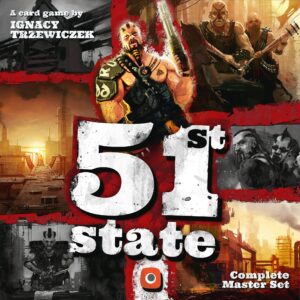
Rule Question
This thread serves as an official FAQ for the game “Root,” containing clarifications and guidance for interpreting the game’s rules.
Rulesplainer
The official FAQ provides important information about the game’s errata, clarifications, and additions. It emphasizes the significance of the Law of Root, especially in understanding the rules structure. Players are encouraged to focus on concise rule interpretations and to always cross-check against the latest updates and printings to avoid confusion about older versions. For instance, the rules clarify that certain actions hinge on context, such as whether you can perform an action when game mechanics specify limits. Players should also be wary of older threads that may contain outdated rulings, especially those before the June 2018 update. Finally, various questions regarding interactions between factions, specifically correlating to the Vagabond’s unique rules and the Lizard’s actions, have been addressed, helping streamline gameplay.
Official FAQ and Guide for Reading the Rules
Rule Question
How does the Vagabond interact with other players during gameplay, especially concerning gaining points and moving allied warriors?
Rulesplainer
The Vagabond can indeed aid another Vagabond even though they do not have a relationship marker, as they control the allied warriors. However, the Vagabond cannot directly strike another Vagabond. This scenario emphasizes that though the Vagabond may use allies in a strategic manner, they must follow rules inherent to their actions. For additional clarity, the Law of Root indicates that interactions need to adhere closely to the defined mechanics, particularly with how movement and scoring points occur. This means employing tactics effectively without breaching the laid-out rules regarding interactions among different factions is key. Thus, while some player strategies may seem advantageous, they must meticulously align with the rules’ semantics regarding action fulfillment and scoring.
Interactions of the Vagabond
Rule Question
Can the Lizard Cult use the Sanctify action in a clearing that does not have any buildings, and are there implications for converting empty clearings?
Rulesplainer
The Lizard Cult can target any clearing with the Sanctify action, even if it contains no buildings, but they cannot place a garden without fulfilling the action’s complete requirements. Similarly, the Convert action cannot be performed in an empty clearing, as it requires the placement of a warrior. These stringent conditions emphasize the importance of completing actions as outlined in the rules. The learning and interpretation of each faction’s specific actions highlight the ongoing discussions about the nuances of gameplay, reiterating that misinterpretation can lead to significant gameplay differences, especially concerning the interplay of actions in various scenarios.
Clarifications on Lizard Cult Actions
Rule Question
What happens if the Vagabond moves allied warriors into a sympathetic clearing, and how does this trigger Outrage?
Rulesplainer
When the Vagabond moves allied warriors into a sympathetic clearing, it triggers Outrage since the player must adhere to the rules governing interactions within the game. This means the player controlling the Vagabond is responsible for any costs associated with moving those allied warriors into a sympathetic clearing. The interactions are carefully outlined to ensure fair play and strategic depth. Thus, being aware of how movements and ally actions impact the gameplay dynamic is crucial for effective strategy. This aspect underpins the intricate relationships between factions and the tactical opportunities players have to exploit during gameplay. The clarity of these interactions reflects the need for players to thoroughly understand the conditions that lead to Outrage to maximize their chances of success.
Outrage Mechanics Explained
Rule Question
Can players in combat scenarios use Ambush cards, and what effect do they have in relation to the context of increased interactions during a battle?
Rulesplainer
Players can certainly use Ambush cards during combat, and if the ambush is successful, it can inflict additional hits, modifying the battle’s outcome. This dynamically alters the flow of how combat is resolved, giving the defender an unexpected advantage by dealing hits before the regular sequence of the battle occurs. These kinds of tactical decisions emphasize the importance of timing and strategy in combat. Players should aim to use Ambush cards strategically, as the cascading effects can lead to immediate shifts in the contest between factions. Understanding how these cards interact with the combat rules is key in leveraging them effectively, allowing for clever maneuvering in gameplay.
Understanding Ambush Usage
Rule Question
How does the game’s victory point system work, specifically concerning the actions and pieces removed in battle, especially regarding the Eyrie faction?
Rulesplainer
Victory points in the game are awarded mainly for the removal of enemy buildings or tokens, while warriors do not usually grant points for removal. For the Eyrie faction, they can score an additional victory point by successfully dealing with enemy buildings or tokens. The scoring mechanics play a crucial role in the game’s strategic depth, as players must focus on not just combat but also the placement and management of their pieces to maximize point totals. Each faction has unique rules that govern how victory points are accumulated, creating different pathways and strategies for winning. Understanding these mechanics ensures players can better navigate the game’s complex interactions effectively.
Clarification on Victory Points
Rule Question
The thread discusses the various uncommon rules and nuances of gameplay in the board game “Root,” particularly those that can lead to confusion for new players when teaching the game.
Rulesplainer
The post by Norsehound emphasizes the importance of understanding specific “gotcha” rules in “Root,” which can lead to unexpected game outcomes. These rules include distinctions in how cards are crafted, the implications of rules like “rule” in a clearing, and specifics for each faction’s abilities like the Marquise De Cat’s building mechanics and Eyrie movement rules. The consensus among participants is that each player’s understanding of these nuances can vary widely, leading to misunderstandings during gameplay, especially in terms of scoring points from combat and the conditions that lead to hostility between factions. Participants have provided clarifications on points regarding the Vagabond’s actions, particularly that any removal of a warrior makes factions hostile, even through methods like ambushes. This is crucial for players teaching the game to ensure all players are aware of these complex interactions to avoid frustration and misplays.
On teaching: The little “Gotcha” rules
Rule Question
This thread discusses several rule clarifications about a game, particularly the interactions involving wood tokens, actions of the Cats faction, and the Vagabond’s abilities.
Rulesplainer
1. Wood tokens can indeed be attacked, and when destroyed, they provide 1 victory point. However, you must first remove any warriors before deciding to remove tokens. 2. A battle counts as one out of the maximum of three actions you can take during the daylight phase, and you are allowed to conduct three battles in one turn. 3. The Vagabond is responsible for deciding which of their items take damage, including exhausted items. 4. Although the Vagabond can gift multiple cards in a turn for victory points, keep in mind that points from gifting only occur once their relationship level reaches a certain point. 5. The discussion emphasizes ensuring clarity in how these rules are applied and interpreted among players.
Questions after first game
Rule Question
Can players negotiate a discount for Riverfolk services in exchange for something else outside of the Riverfolk’s Evening phase?
Rulesplainer
The general consensus is that while some negotiation is allowed, it must occur during the designated price-setting phase of the Riverfolk’s turn. Players cannot create player-specific discounts, as the prices established must be global and shown on the Riverfolk’s Services track. The applicable rule states that the buyer must place the exact number of warriors as indicated in the Payments box, so any changes to pricing through negotiation are not legal outside of the established rules framework. Rules focus on what players can do while not explicitly outlining everything they cannot do; however, it is important to follow the designated phases. Negotiating outside of the Riverfolk’s Evening is deemed illegal, as it does not adhere to structured gaming play. Overall, the ability to negotiate is limited and should respect the game’s structure to maintain balance.
Can you negotiate a discount with/as Riverfolk for services in exchange for something else, outside of the Riverfolk’s Evening?
Rule Question
The question arises regarding how the triggering of Outrage is handled when Hirelings (specifically Flame Bearers) remove a sympathy token. Should the controlling player pay a card from their hand, or should the payment come from the deck?
Rulesplainer
The official ruling states that the player controlling the hirelings must pay from their hand when Outrage is triggered as a result of the hirelings removing a sympathy token. This decision is considered somewhat unusual but is supported by rules that define the player’s responsibilities when their hirelings take actions that trigger game effects. Although the player does not gain victory points from this action, they are nonetheless responsible for the consequences of their hirelings’ actions. Discussions among players indicate frustration over this ruling, as it may seem unfair to penalize a player for a decision made by a non-player entity. Furthermore, several players argued about the logic of hirelings acting as players under these specific circumstances. Ultimately, this ruling reflects the game’s design where all player actions must be accounted for, including those taken by hirelings they control.
Hirelings (Flame Bearers) + Triggering Outrage






